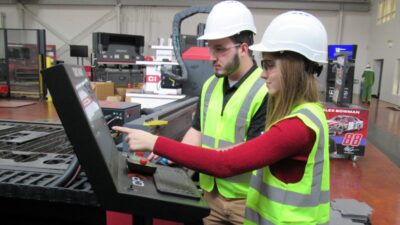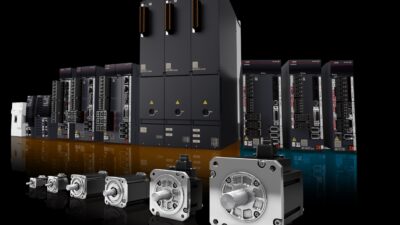Keeping processes running to specification requires accurate calibration of plant instrumentation. Pressure instrumentation, including gages, switches, transmitters, transducers, and differential-pressure units, all require this attention on a regular basis. Calibration equipment types vary widely.
KEY WORDS
Process control and instrumentation
Pressure sensing/measurement
Calibration
Sidebars: Portable calibration ensures quality pharmaceuticals
Keeping processes running to specification requires accurate calibration of plant instrumentation. Pressure instrumentation, including gages, switches, transmitters, transducers, and differential-pressure units, all require this attention on a regular basis. Calibration equipment types vary widely. However, the fundamental choice often comes down to whether to calibrate on site or in a calibration lab.
What price accuracy?
Making the choice between on-site or lab-based calibration depends on the instrument accuracy required. Laboratory calibration, using a precision deadweight tester, generally offers the best accuracy. In fact, deadweight testers are often used to check other types of pressure calibrators. However, many pressure transmitters do not require the degree of accuracy offered by a lab-based deadweight tester.
In choosing a calibrator, specifications of both calibrator and the transmitter to be tested must be carefully evaluated to obtain a desirable measurement uncertainty ratio. A 4:1 ratio of calibrator accuracy to transmitter accuracy is generally considered adequate to avoid statistical analysis of measurement data. However, statistics on measurement history may be used to justify a lesser ratio. The overall cost benefit may justify the extra effort.
Temperature effects
Temperature can have a significant effect on pressure calibration. Calibration accuracy degrades rapidly when temperature strays either way from ambient. The key for determining the effect of nonstandard temperature on the calibrator itself is the instruments’ specifications. Most calibrator specs provide an “adder” to determine accuracy specs if ambient temperature differs from the required calibration temperature. These deviations from the basic calibrator accuracy are listed per 8 C or 8F. Based on this, it is easy to see that calibrators perform more accurately in laboratory conditions.
Keep in mind, that operation of the transmitter under calibration may also be affected by temperature. The control engineer must determine whether a significant error may be introduced by calibrating the transmitter in a lab environment, then returning it to a much different operating temperature. A situation can occur where a less accurate field calibration is better than a lab-calibrated transmitter moved to a vastly warmer or colder environment. For example, some portable silicon sensor-based pressure calibrators are characterized over temperature and provide sufficient accuracy at the ambient working temperature of the transmitter. Thus the on-site calibration of the transmitter may yield better process measurements.
If a pressure transmitter is exposed to outside temperature fluctuations, field calibration is desirable on a frequent basis (monthly, quarterly, etc.) to maximize instrument performance under a wide variety of weather conditions. Even with this diligence, it is desirable to keep pressure transmitters from experiencing temperature variations whenever possible.
A look at calibration equipment
Basic types of lab calibration devices include deadweight testers and silicon sensor-based or fused-quartz bourdon tube sensing element equipment. Lab-based equipment is usually more costly than portable calibrators, especially if a wide variety of different pressure ranges is required. High accuracy equipment is usually not easily portable and may require a “clean” environment. This is especially true for high precision deadweight testers.
The easiest calibrators to use are those that incorporate pressure controllers. In operation, an operator enters the desired calibration pressure via a keypad. The device’s controller then internally adjusts its pressure from a high-pressure source. Internal pressure control is very precise.
The most difficult of the lab calibrator types to use are deadweight testers, especially high-precision models. Handling of precision parts and standard weights that control the required pressure in the required clean environment can be tricky and time consuming. The easiest to use are calibrators which incorporate pressure controllers and operate from a compressed air supply. In between are those which rely on a hand pump as the compressed air source.
High-end portable calibrators measure reference pressures using integrated silicon sensors, though some lower accuracy models use metal bourdon tubes. Others use metal diaphragms with silicon strain gages bonded to its inside surface. The silicon-based sensors operate in a bridge configuration where the bridge impedance is unbalanced by application of pressure to the sensor diaphragm. These devices are nonlinear in both their pressure and temperature responses. Less accurate devices rely on analog compensation to linearize pressure, but this does little to correct for temperature effects. Advances in miniaturized electronics now allow sensors to be characterized over wide temperature and pressure ranges, then corrected for accuracy over a wide range of ambient conditions.
Many styles of portable pressure calibrators are available. Some measure pressure only. Others source and measure two or more functions simultaneously, such as pressure and loop current. Units with the pressure sensing element built into the calibrator may not have the range flexibility of those using external modules. Keep in mind, ease of use is an important consideration in choosing a portable calibrator. It affects not only the time to perform each calibration but also the cost of training technicians to use the device.
All calibration procedures require a pressure source. These are easier to manage in the lab where a nitrogen bottle or other source of compressed air can be used. Larger lab-based units often include pressure controllers, which makes setting pressure much easier.
In many field calibrations, if a source of bottled or compressed gas are not readily available or practical, hand pumps are required. Even so-called “portable” pressure source such as small nitrogen bottles with a controller are quite heavy and difficult to use in constricted or awkward spaces.
Managing calibration resources
Laboratory calibration requires instrumentation to be removed from the process. Removal means either shutting the process down, running the process without monitoring at that location, or replacing the instrument with a spare. Shutting the process down for lab calibration is usually not economically viable. Running the process without monitoring is also unadvisable.
Although maintaining spares may be desirable in case of instrument failure, keeping extras in inventory for calibration swapout can be expensive. These costs can be further aggravated by multirange instrument requirements. Unless the accuracy of laboratory calibration is absolutely necessary, it usually is far easier and less costly (the device is out of service only for as long as calibration takes) to calibrate in the field.
Handling contamination
Many processes involve fluids or gases which are harmful to lab calibrators. Thus lab calibration requires thorough cleaning of the instrument to be checked. Keep in mind, cross contamination concerns also complicate the use of swapable spares, especially if the same equipment can be used in different parts of a process.
Silicon-based portable calibrators often have stainless-steel diaphragms for protection from hostile fluids. They often offer externally mounted or interchangeable sensors that can be dedicated for use with fluids encountered at different parts of the process. Portable calibrators are easier to clean than the instruments they service, allowing them to be used without fear of spreading contamination.
Role of calibration records
Keeping calibration histories on pressure instrumentation is regularly required for both process safety and quality documentation. Statistical analysis of these histories can also be used to determine instrument performance trends and permit replacement of defective units prior to complete failure.
Laboratory calibration facilitates good record keeping. Lab calibrators can be interfaced to a PC with appropriate software for record keeping and reporting. Some pressure calibration equipment is controllable through a serial or GPIB port. In these applications, much of the calibration process can be automated and data directly downloaded.
Additionally, some sophisticated portable calibrators can source and measure simultaneously, recording data as the calibration is performed, and store it for later uploading to a PC for long-term storage and analysis. Portable calibrators are also available that can be preprogrammed to provide an instrument technician the location of a particular pressure instrument and the steps required for its calibration.
Calibrating pressure transmitters in the field is an attractive option. Generally, it is less costly and less disruptive of the process. Laboratory calibrations, on the other hand, provide the utmost in accuracy. Making the call on calibration methods requires thorough knowledge of process, its quality requirements, and its instrumentation.
For more information on Fluke Corp., visit www.controleng.com/info .
Author Information
Robert N. Cash is senior product development engineer for Fluke Corp. in Everett, Wash.
Portable calibration ensures quality pharmaceuticals
Bio Science Contract Production Corp. (BSCP, Baltimore, Md.) is a contract biologics manufacturing company. Biologics are pharmaceuticals derived from living organisms. Typically, BSCP completes a fermentation process, followed by several purification stages to supply its clients with bulk biologic product. Most of the companies that BSCP works with supply it with a product in the clinical trail stages.
For example, a large company may have a group of research scientists who have an innovative cure for high cholesterol. The company would like to investigate and test the cholesterol cure, but it can’t afford the time, the personnel, or the space necessary to grow and manufacture the experimental product. As a solution, the company solicits the manufacturing expertise of BSCP, which advances the experimental process and returns a manufactured product to the client.
Derek Graves, facilities specialist for BSCP, is responsible for the entire calibration system and manages the ultrapure water generation systems, the pure-steam systems, the raw materials facilities, and the HVAC management of the multiuser clean room facility.
The biggest contaminant in any fermentation process is an unknown organism being introduced to the system. Therefore, the equipment must be kept clean and sterile throughout the process. Mr. Graves uses a Model 743B Documenting Process Calibrator from Fluke Corp. (Everett, Wash.) as an integral part of calibrating BSCP’s autoclaves that sterilize tubing, flasks, and beakers before use. The chamber of a single autoclave is 4 3 4 3 8 ft and must maintain a temperature of
In this capacity, the 743B is used on the autoclave to calibrate the pressure transducer, which fluctuates from full vacuum to 32 psia and converts that signal to 4-20 mA to the control system. Using the 743B, BSCP can also verify temperature in the autoclave chamber by the RTD, monitor the pressure for saturated steam conditions, and perform drain RTD temperature calibration.
“With this device, we can monitor a series of different processes including the calibration of our pressure transducers,” said Mr. Graves. “It is very difficult to reach zero psia, which is full vacuum in a calibration condition. With the Fluke 743B you can scale settings so that you get as close as possible. Because the 743B linearizes the data, we can still measure the error. Accurate pressure (and temperature) calibration is an integral part of the Good Manufacturing Practice validated facility equipment that clients expect from BSCP.”



